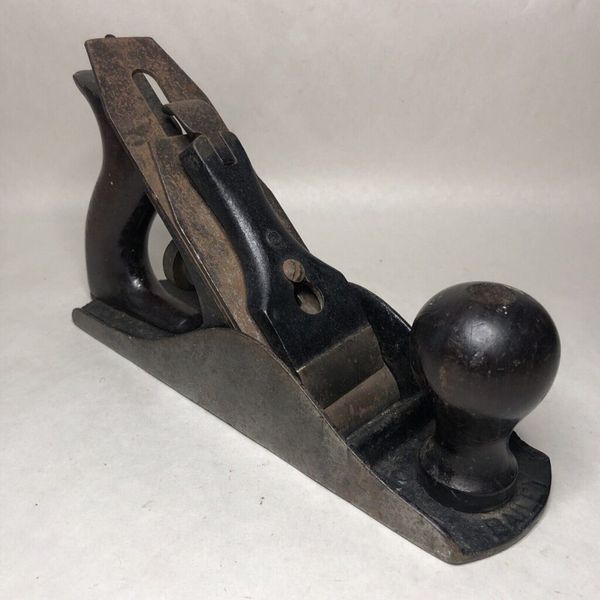The Stanley Smooth Wood Plane is not just any tool; it is a symbol of the ingenuity and craftsmanship that have shaped the woodworking industry for over a century. Let’s delve into the captivating story of this iconic hand tool that has left a lasting legacy in the world of woodworking.

The Ancient Origins of Wood Planes
Wood planes have a long and storied history, dating back to ancient times. Early examples of these tools have been discovered in Roman archaeological sites. Crafted from wood and iron, these rudimentary planes allowed carpenters to shape and smooth wood with remarkable precision. However, it wasn’t until the 19th century that wood planes evolved into the more sophisticated designs we know today.
The Birth of the Stanley Rule and Level Company
The Stanley Smooth Wood Plane owes its origins to the Stanley Rule and Level Company, founded by Frederick T. Stanley in 1857 in New Britain, Connecticut. Initially, the company focused on manufacturing hardware products. However, it soon recognized the demand for high-quality woodworking tools and expanded its offerings to include hand planes.
Stanley’s Innovative Designs
In 1869, Stanley acquired Leonard Bailey’s patents for metal-bodied planes. This landmark event in the company’s history revolutionized the woodworking industry. Bailey’s ingenious designs offered superior adjustability and durability compared to traditional wooden planes. Stanley’s adoption and refinement of these designs laid the foundation for the company’s dominance in the hand tool market.
The Rise of the Bailey Line: Quality and Precision Unveiled
Stanley’s most iconic series of wood planes, known as the Bailey line, quickly established itself as a symbol of quality and precision. Named in honor of Leonard Bailey, these planes were introduced in the late 19th century and featured various types, including block planes, jointer planes, and smooth planes. Among them, the Stanley No. 4 Smooth Plane rose to prominence due to its versatility and exceptional performance.
Unlocking the Power of the Stanley Smooth Wood Plane
The Stanley Smooth Wood Plane excels at smoothing and flattening wood surfaces. It is an indispensable tool for furniture makers, carpenters, and craftsmen alike. By removing small amounts of material with each pass, this plane creates a fine finish that elevates the overall quality of any woodworking project.
Components and Operation
The Stanley Smooth Wood Plane consists of several key components:
- Body: Made of cast iron, it provides stability and weight for smooth operation.
- Iron (Blade): An adjustable blade that cuts through the wood.
- Frog: A metal piece that holds the iron at the correct angle and allows for fine adjustments.
- Cap Iron: Creates a secure hold on the blade, minimizing chatter during use.
- Lever Cap: Securely holds the iron and cap iron in place.
- Handle (Tote) and Knob: Provide a comfortable grip and precise control during use.
Operating the Stanley Smooth Wood Plane involves a few simple steps:
- Adjustment: Set the blade depth and angle using the adjustment mechanisms.
- Planing: Hold the plane firmly with both hands and glide it smoothly across the wood surface in even strokes.
- Inspection: Regularly check the wood surface to ensure a smooth finish and make any necessary adjustments to the blade.
The Versatility of the Stanley Smooth Wood Plane
Woodworkers love the Stanley Smooth Wood Plane for its versatility. It is a go-to tool for various tasks, including:
- Smoothing Rough Lumber: Removing imperfections and creating a polished surface.
- Jointing Edges: Ensuring straight and even edges for joining boards.
- Trimming and Shaping: Adjusting dimensions and shaping curves.
- Adding Finishing Touches: Enhancing the appearance of finished pieces.
The Timeless Legacy of the Stanley Smooth Wood Plane
Enduring Popularity and Lasting Impact
The Stanley Smooth Wood Plane continues to be incredibly popular among professional woodworkers and hobbyists alike. Despite the advancements in power tools, many artisans still prefer the tactile precision and control that hand planes offer. Among them, the Stanley No. 4 Smooth Plane remains a favorite due to its balanced design and outstanding performance.
Influence on Modern Woodworking Tools
Stanley’s innovative designs in hand plane construction have left an indelible mark on modern woodworking tools. Today, many contemporary hand planes draw inspiration from Stanley’s classic designs. These tools combine advanced materials and engineering with the timeless principles of craftsmanship, allowing woodworkers to achieve new levels of precision.
Collectibility and Antique Value
Vintage Stanley Smooth Wood Planes have become highly sought-after collectibles, appreciated for their historical significance and fine craftsmanship. Well-preserved examples of early Stanley planes can command high prices at auctions and antique shops, serving as a testament to the enduring legacy of these tools.
A Symbol of Craftsmanship and Artistry
Beyond their practical utility, Stanley Smooth Wood Planes embody the artistry and dedication of craftsmen throughout history. They represent a connection to the past, where skilled artisans meticulously shaped wood with precision and care, creating works of timeless beauty.
In Conclusion
The Stanley Smooth Wood Plane transcends its status as a mere tool. It encapsulates the ingenuity, craftsmanship, and passion that have propelled the woodworking industry forward. Endowed with a rich history, versatile functionality, and an enduring legacy, this plane remains a treasured companion for woodworkers worldwide. Whether held by a seasoned craftsman or a passionate hobbyist, the Stanley Smooth Wood Plane continues to inspire creativity and excellence in woodworking. With every stroke, it represents a timeless pursuit of perfection.





